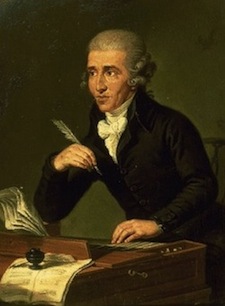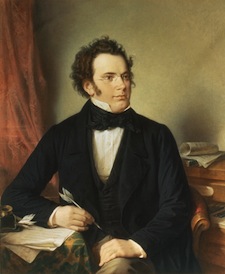It has been a tumultuous couple of days on one hand, simply busy on the other. Last night was simply hectic, and today we had my parents over for their anniversary. Ripping CDs has been a low priority as a result, so I transferred more purchases (mp3 downloads) from the past year or so from my main laptop onto the server computer. After ripping all the Mozart symphonies the other day (and already having all the Beethoven symphonies on that computer) I decided today was a good day to round out the Classical periods heavy hitting symphonists. So the 45-CD Antal Dorati complete Haydn symphonies and the Goodman / Hanover Band Schubert symphonies are on deck for tonight.
I don’t know why, but I am always so surprised how much I like Haydn when I listen to him. And the Dorati recordings are lots of fun. First of all, they are complete and this is no small task. 104 numbered symphonies, a few lettered ones and all sorts of works that basically are symphonies (just not in name). It is one thing to have 104 orchestral works under your wing (as Dorati does here) but this of course was not all Dorati did. During the 50s and 60s, his Mercury Living Presence recordings (especially the Bartok recordings) are just fabulous. He recorded an amazing amount of music well. And to take on a project the size of the Haydn symphonies is nothing short of impressive.
Papa Haydn’s most significant achievement, in my opinion, was his formalizing of the structures and forms that would occupy most of the Viennese Classical period. And the symphonies are a large part of that (though in the String Quartets you can see these ideas grow and solidify). He had what any composer today would call a pretty cool gig… writing music for a prince with a house orchestra. The prince also played Baryton (a COOL instrument) so he also wrote a huge body of work for that instrument. His music had rhetoric, from the contrasting ideas that exhibit tension then harmony in the sonata-allegro form to the ‘Farewell’ symphony that he wrote to tell the prince that the musicians needed a vacation. But what surprised me most about Haydn when I listen to him is that you really can hear how his approach to motive and development would find its greatest continuation in the music of Beethoven. Haydn wrote 104 symphonies, and as Beethoven’s career closes out the Classical period he finishes 9 that really define and develop the form into the Romantic tradition.
Schubert is the other side of this coin in my mind. He picks up where Mozart left off and does a similar kind of expansion of form with the similar kinds of melodic gifts that Mozart had. The Goodman recordings are on period instruments and use an orchestra appropriate to Schubert’s time. Like Beethoven, Schubert’s work tends to be overly romanticized as well and the Goodman recordings do a great job placing Schubert within the Classical tradition. The recordings have a lightness to them at times, and more detail comes out from the winds (having a smaller proportion to the strings then most modern orchestras). The ‘Unfinished’ benefits particularly well. The second movement is light and airy at times, dramatic at others. These contrasts are shaped even better when the period instruments are used.
With the Haydn, Mozart, Beethoven and Schubert discs all on the computer now there are over 75 discs of classical symphonies. As the rest of the discs of this repertoire are eventually ripped (multiple Beethoven recordings, another Schubert set as well as quite a few individual recordings of Haydn and Mozart symphonies) I think there will be over 100 discs represented. Until tonight, I don’t think I realized what a huge proportion of my recordings represented the Classical Symphony.



